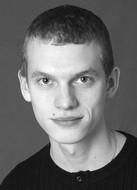Postural control physiology specifics in elite hurdle racers due to long-term motor specialization
Фотографии:
ˑ:
Postgraduate student A.A. Semchenko1
Dr.Biol., Associate Professor A.V. Nenasheva1
PhD, Associate Professor I.V. Izarovskaya1
PhD, Associate Professor Е.V. Zadorina1
Post-graduate student E.F. Baymukhametova1
1South Ural State University (National Research University), Chelyabinsk
The study applied a computerized stabilometry system to analyze the postural control physiology specifics in elite hurdle racers (n=12) and found variations in the static/ kinetic stability rates indicative of the cross motor stereotypes being formed under the specific training and competitive loads, with the counter-lateral synchronization of the relevant proprioceptors and myotatic reflexes. The study data and analysis of the stabilogram and statokinesiograms may be highly beneficial for the hurdle racers’ training and competitive process correction. At the special skills excelling stage when the slow high-amplitude oscillating movements are trained, it is recommended to apply special stands with or without balancing weights to improve the static component of the static/ kinetic balancing skills. The study data showed the precompetitive redistribution of the performance oscillations in the elite hurdle racers’ stabilograms with domination of the middle-frequency amplitudes in the frontal and sagittal planes that may be indicative of the high balance in the specific kinematic chain (movement sequence). The stabilometry tests of the hurdle racers with the sensor-vestibular tests in the training and competitive processes showed low variations in the key static/ kinetic balance rates including dynamic balance ratio, stability index and stability rate.
Keywords: hurdle race, postural balance, statokinetic stability, stabilometry, statokinesiogram, training and competitive system.
References
- Saraykin D.A., Epishev V.V., Pavlova V.I. et al. Dinamika posturalnogo balansa v vertikalnoy poze tkhekvondistov vysokoy kvalifikatsii v godovom makrotsikle [Dynamics of postural balance in vertical position of highly-skilled taekwondokas in annual macrocycle]. Chelovek. Sport. Meditsina, 2017, vol. 17, no. 3, pp. 25–34.
- Semchenko A.A., Nenasheva A.V. Trend izmeneniy stepeni tolerantnosti organizma bareristov k fizicheskoy nagruzke v razlichnye fazy trenirovochno-sorevnovatelnoy podgotovki [Tendency of changes in exercise tolerance in hurdlers at ddiferent stages of training and competitive conditioning]. Chelovek. Sport. Meditsina, 2017, vol. 17, no. 2, pp. 89–93.
- Sliva S.S. Otechestvennaya kompyuternaya stabilografiya: tekhnicheskiy uroven, funktsionalnye vozmozhnosti i oblasti primeneniya [Home computer stabilography: technical level, functional potentialities and spheres of application]. Medical equipment. Moscow: Meditsina publ., 2005, pp. 32–36.
- Strelets V.G., Gorelov A.A. Teoriya i praktika upravleniya vestibulyarnymi reaktsiyami cheloveka v sporte i professionalnoy deyatelnosti [Theory and methods of vestibular reaction control in sports and professional activity]. St. Petersurg, 1995, 150 p.
- Gribble P.A., Hertel J. Effect of lower-extremity muscle fatigue on postural control. Archives of Physical Medicine and Rehabilitation, 2004, vol. 85, pp. 589–592.
- Gu J., Xu J., Tu L. Discuss teaching model of quality teaching about hurdle teaching which is major in track & field of physical education. Journal of Suzhou University, 2007, vol. 2, pp. 92–94.
- Epishev V.V., Ryabina K.E., Isaev A.P., Erlikh V.V. Postural balance in middle-distance runners. Russian Journal of Biomechanics. 2017, vol. 21, no. 2: 144-154.




 Журнал "THEORY AND PRACTICE
Журнал "THEORY AND PRACTICE